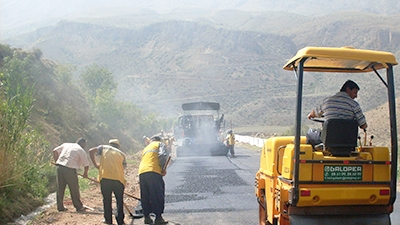June 2014 - Global Economic Prospects is a World Bank Group flagship report which twice yearly examines growth trends for the global economy and how they affect developing countries. The reports include three-year forecasts for the global economy and individual developing countries and regions.
Europe and Central Asia - Overview
A modest recovery in the developing Europe and Central Asia region remained on track in the first quarter of 2014, despite headwinds from global financial turbulence since late January and the ongoing geopolitical tension between Russia and Ukraine.
Industrial output accelerated to an annualized rate of 12 percent in March in the developing Central and Eastern Europe sub-region, notably Hungary and Romania, helped by rising exports to the Euro Area.
In Turkey, industrial output continued to expand in the first three months of the year, helped by strong export growth. But momentum has slowed and weakening business and consumer confidence point to softening domestic demand ahead. In addition, higher inflation and past currency weakness are constraining private consumption and investment.
Among the developing Commonwealth of Independent States (CIS), slowdown in key trading partners, geopolitical tensions, declining metal and mineral prices and domestic capacity constraints have slowed growth in 2014. Growth in Kazakhstan and Azerbaijan moderated with new delays in bringing additional oil production capacity on-stream.
In Ukraine, escalating tensions with Russia and domestic political instability contributed to a 12.5 percent contraction in Q1 GDP. Gross capital flows to the region halved in February but have since rebounded strongly led by a surge in bond issuance. However overall flows remain 42 percent lower than the same period last year and equity flows remain negligible.
Outlook
The outlook for the developing Europe and Central Asia region has weakened in the near term, owing to a sharper-than-expected slowdown in a number of large economies in the region, including Turkey, Kazakhstan, and Ukraine. Growth in the region is expected to temporarily weaken to 2.4 percent in 2014 before picking up to 3.7 and 4.0 percent in 2015 and 2016, respectively.
While most developing countries in the Central and Eastern Europe sub-region are expected to see strengthening in growth this year as they continue to benefit from stronger import demand from the Euro Area, Turkey remains vulnerable to domestic and external shocks, including higher inflation, political uncertainty, and tighter global financial conditions.
For the developing CIS, a marked slowdown is expected this year, reflecting weaker revised forecast for Kazakhstan and Ukraine, as well as broader spillovers from the slowdown in Russia and China, the largest trading and investment partners, and a weakening trend in key commodity prices. The developing CIS is also exposed to worsening geopolitical tensions in Russia and Ukraine.
Belarus is heavily exposed through trade linkages to Ukraine and Russia as are Armenia and Moldova, while remittances from Russia are a substantial share of GDP in Armenia, Kyrgyz Republic, Moldova and Tajikistan.
Risks
Heightened tensions between the European Union (EU) and Russia are a key downside risk to the regional forecast. Given the close economic interdependence between the EU and Russia, an escalation of sanctions would likely impose large economic costs and damage recoveries in both areas, with significant negative spillovers throughout the region. In addition, disorderly adjustments to higher global interest rates - either due to anticipated or actual monetary policy tightening in the United States or general increases in risk aversion - continue to pose a risk.
There are also clear downside risks from weaker domestic demand in the Central and Eastern Europe sub-region particularly in the Southern Europe, relating in the near term to devastating floods (especially in Serbia and Bosnia and Herzegovina) and in the medium term to still high unemployment, high private sector debt, and the slow recovery in bank lending amid high (and in some cases rising) nonperforming loans. Downside risks to commodity prices and potential weakening of remittance inflows from Russia represent a major source of uncertainty for developing CIS.

